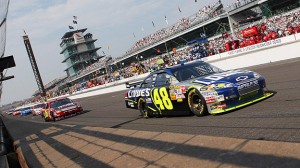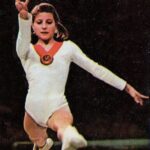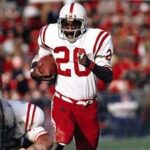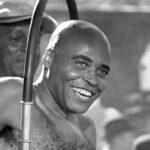The Brickyard 400 Is Losing Its Mystique
While the event is still regarded as the second biggest race of the NASCAR season behind the Daytona 500, it seems that the popularity of the race among fans has reached an all-time low.
Back in May, the Associated Press reported that ticket sales for the race were down from last year’s event where only 140,000 people, almost a 50% decrease from 2007 where an estimated 270,000 fans showed up for that year’s race.
There was also a 13 percent decrease in the television ratings from the 2009 Brickyard 400 to last year’s race, which was both telecasted on ESPN.
So, what is the reason for this precipitous decline in the interest of the Brickyard 400?
Some blame the economic downturn and high gas prices, while others have suggested Indianapolis has to fight with tracks such as Chicago, Kentucky, and Kansas to get Midwestern fans to come out to the track.
But the most likely reason for NASCAR’s problem at the Brickyard is what happened in the 2008 race.
That was the first time that NASCAR raced the Car of Tomorrow at the speedway and the results proved to be disastrous. The combination of the new car and the abrasive pavement caused the rear tires to explode after several laps of racing.
Thus, NASCAR officials decided to throw competition cautions every 10-12 laps during the 160-lap event, throwing the yellow flag nine times during the race.
The fiasco seemed to turn off fans around the Indianapolis area, vowing they would never return to the speedway to see a NASCAR race.
The following year saw a 25% decrease in attendance as only 180,000 fans showed up for the 2009 race, compared to 240,000 in 2008. While “Tiregate” has had a sharply negative effect on the race, there is evidence to suggest that the event’s decline started before the infamous 2008 race.
Even though there were 240,000 fans at the track for the 2008 event, which was a drop from the 270,000 fans from the previous year.
And the television ratings for the race also started to drop before that 2008 race, as the race has only been able to attract as much as 6.5 million viewers since the race moved from broadcast to cable television in 2007 and down from a record 10.2 million viewers that watched the event in 2002 on NBC.Some attribute the decline before “Tiregate” as the lack of exciting racing during the race as the flat 2.5 rectangle does not seem to provide much side-by-side racing for the stock cars.
But perhaps another reason for the downturn is that the novelty of NASCAR at a speedway that was made famous for open-wheel racing has worn off a bit.
When NASCAR first invaded the Brickyard in 1994, it was one of the most anticipated races in NASCAR history as many as 85 drivers attempted to qualify for the race.
The inaugural race also featured the largest crowd in NASCAR history as nearly 350,000 filled the seats and infield to see Jeff Gordon be the first driver to win a NASCAR race at Indianapolis Motor Speedway.
But as the years have gone on, the NASCAR race at the Brickyard has become a regular thing and the uniqueness that existed in 1994 is now gone.
There was a prevailing thought some years ago that the Brickyard 400 was a bigger deal than the Indianapolis 500.
While the TV ratings for that event are nowhere near the numbers before the IRL-CART split in 1996, the Indy 500 continues to sell out the place and draw crowds of nearly 250,000 fans.
So, can the Brickyard 400 regain its prestige as a glamorous event?
Starting next year, the track will hold a Nationwide Series race on the Saturday before the race as well as a Rolex Sports Car Series race on the 2.65 road course inside the 2.5 rectangle in hopes of boosting attendance.
While that could get more people in the seats, it might not get more TV viewers to tune in.
SI.com’s Bruce Martin suggests that the Brickyard 400 be one leg of NASCAR’s “Triple Crown”, and if one driver wins at Indy, the Daytona 500, and another selected race in the same season, they get a huge bonus in the range of $5 million.
This could create interest like Bill Elliott’s quest for the Winston Million back in 1985.
No matter what they come up with or what they try, NASCAR has to fix the Brickyard 400.

















